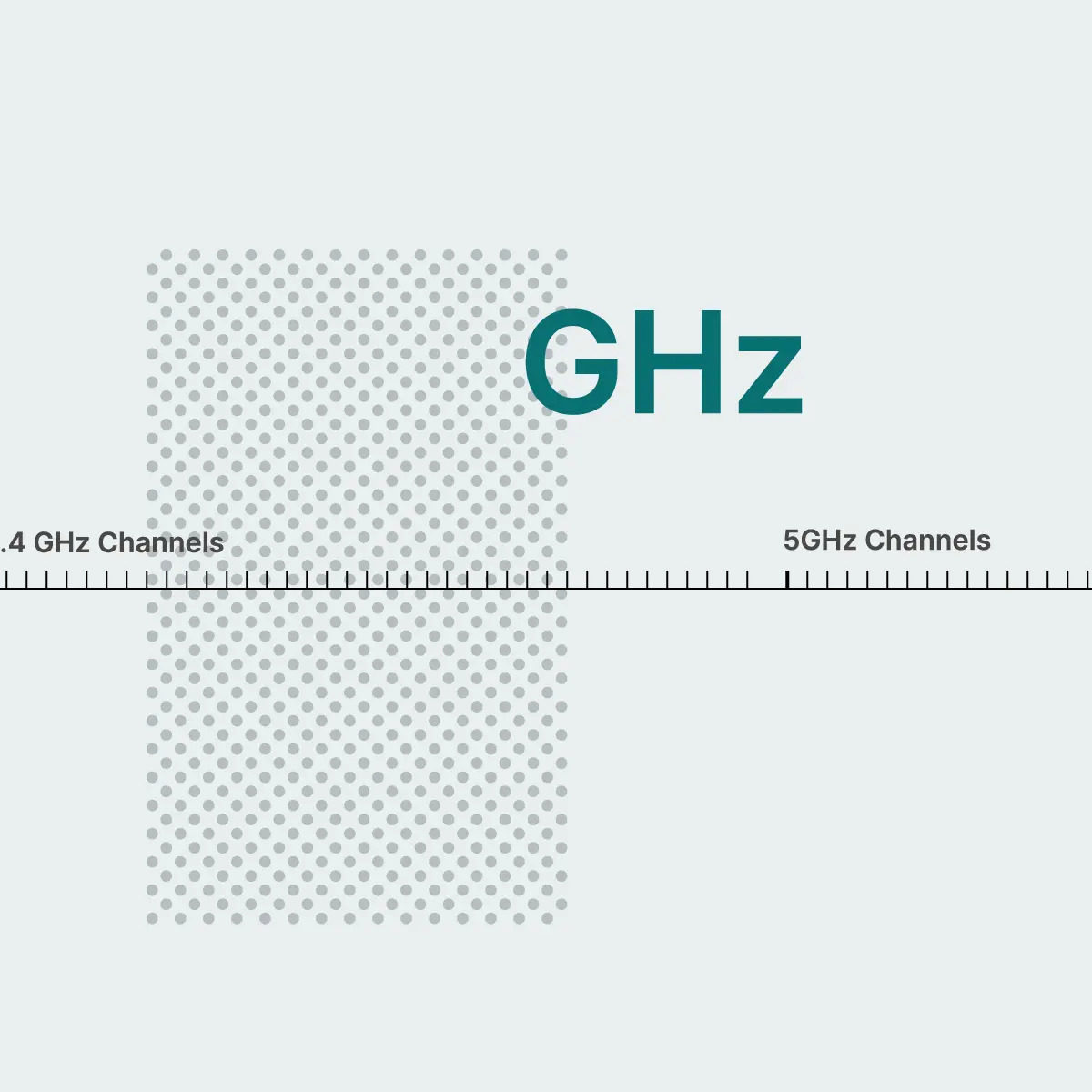

Each channel is spaced 20MHz apart and separated into three Unlicensed National Information Infrastructure (UNII) bands. Wireless devices specified as 802.11a/n/ac are capable of operating within these bands. The 802.11 standard defines 23 20MHz wide channels in the 5 GHz spectrum. Re-transmissions result slower speeds because it takes longer to successfully send a single frame. If a the sender does not receive an ACK, it must re-transmit the same frame until an ACK is received. The 802.11 standard uses a reliable transport mechanism where each sent data frame must be ACK'd by the receiver to ensure the frame was not lost in transit or corrupted. As the number of interfering devices increase, so does the potential for frame loss. This is called interference because one device's transmission interferes with another device's transmission. In this case, two 802.11 devices on different channels that overlap may transmit at the same time causing a collision and possible data corruption or frame loss. However, the CCA check may not detect a transmission occurring on a different channel that also has some frequency overlap on the channel the check is being performed on. When two wireless devices transmit at the same time, their radio signals will collide and become garbled. 802.11 devices on the same channel use a CCA check to avoid these collisions. This results in slower speeds because devices have to wait longer to send data. As the number of devices needing to transmit frames increase on the channel, congestion can occur to the point where devices spend more time receiving than sending. If the channel is clear after a check, the device can access the channel and send some data. When a device detects another transmission in progress, it will perform a random back-off for a short period of time after which it would perform another check before attempting to transmit again. Specifically, devices perform a Clear Channel Assessment (CCA) by listening to see if another device is actively transmitting on the channel before attempting to send its own frames. To avoid collisions, 802.11 wireless devices use a listen before speaking approach when accessing the wireless medium. If there is an excessive amount of collisions, data would never be transmitted successfully and the wireless network would be unusable. All devices can hear each other's transmissions and if any two devices transmit at the same time, their radio signals will collide and become garbled resulting in data corruption or complete frame loss. The two sections below explain why this is important.ĪPs and wireless clients on the same channel who are also within range of each other form a single broadcast domain, similar to an Ethernet hub. The goal of using different non-overlapping channels is to avoid the affects caused by channel utilization and interference.
#Unifi 5g channel width for mac manual
In these instances, a Dashboard administrator can use RF measurements from a site survey to perform manual channel and power selection to fine tune the wireless network. In certain high density deployments however, these features may not be aggressive enough. The Cisco Meraki wireless system provides two features (auto channel selection and power reduction) that automatically adjust the channel settings and power levels of neighboring APs in the same network with the goal of providing strong wireless coverage while preventing an increase in channel utilization or causing interference. This prevents the APs from causing an increase in channel utilization or interfering with each other.

When APs have overlapping coverage they should be set to different non-overlapping channels. In order to achieve this, neighboring APs will need to be close enough so that their coverage cells have some overlap. This article discusses channel planning best practices for an 802.11 wireless deployment.ĪPs should be deployed in such a manner that wireless clients experience minimal packet loss and choose the AP with the strongest signal when roaming.


 0 kommentar(er)
0 kommentar(er)
